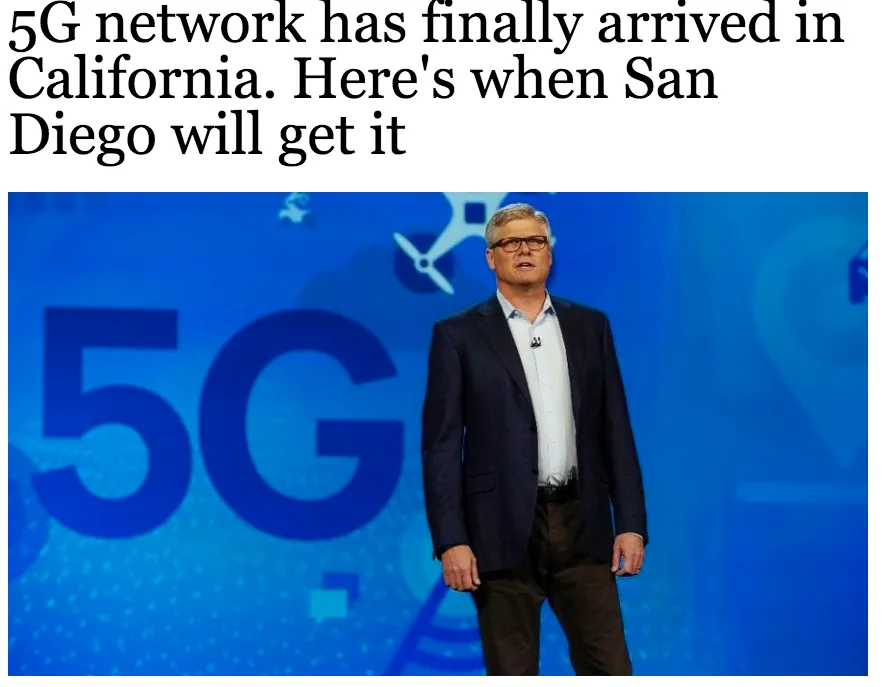AT&T 5g

The long-awaited, high-speed 5G internet broadband that technologists say will revolutionize smart devices and mobile phones has finally arrived in California with Sacramento and Los Angeles being among the first cities to get the technology, Verizon announced this week.
Pre-orders for 5G in select California cities — and others outside the state, including Houston and Indianapolis — are now available and service is expected to begin Oct. 1, the company said.
So, when will San Diego and the rest of the country come to enjoy this technology? Here’s what to expect.
When and where 5G will roll out in California?
Super-fast 5G will roll out slowly and gradually in California between 2018 and 2019.
AT&T has promised that major cities like San Diego, San Francisco and San Jose will be getting the service some time in 2019. AT&T has so far only introduced 5G to 12 cities outside California. Verizon has not said when it will roll out 5G to other California cities beyond Los Angeles and Sacramento.
Qualcomm, the San Diego company that makes 5G microchips for mobile devices, said the ultra-fast broadband should arrive in the U.S. by April 2019.
What is 5G, anyway, and how does it work?
The fifth-generation — G is for “generation” — broadband technology is the latest iteration in wireless connectivity that mobile devices rely on to send and receive internet data on the go.
Whereas 4G broadband technology makes it possible for mobile phones to live-stream video such as FaceTime on an iPhone or Periscope on Twitter, 5G is said to be 10 times faster.
What’s the big hype all about?
With internet speeds that high on a broadband network, technologists believe 5G will expand the number of wireless devices in the commercial market.
It’s not just smart phones that will use it. Smart speakers, home appliances, security cameras and now driverless vehicles use wireless networks. In 2016, there were 6.4 billion devices connected to the internet — a concept known as the “internet of things,” said technology research company Gartner.
By 2020, there will be as many as 20.8 billion devices connected to the internet, Gartner predicts.
What does this mean for consumers?
It’s widely believed that 5G will push more smart devices in homes. So what does a 5G home look like? Heidi Flato, a public relations professional for Verizon, shared a photo on Twitter of what that looks like.
